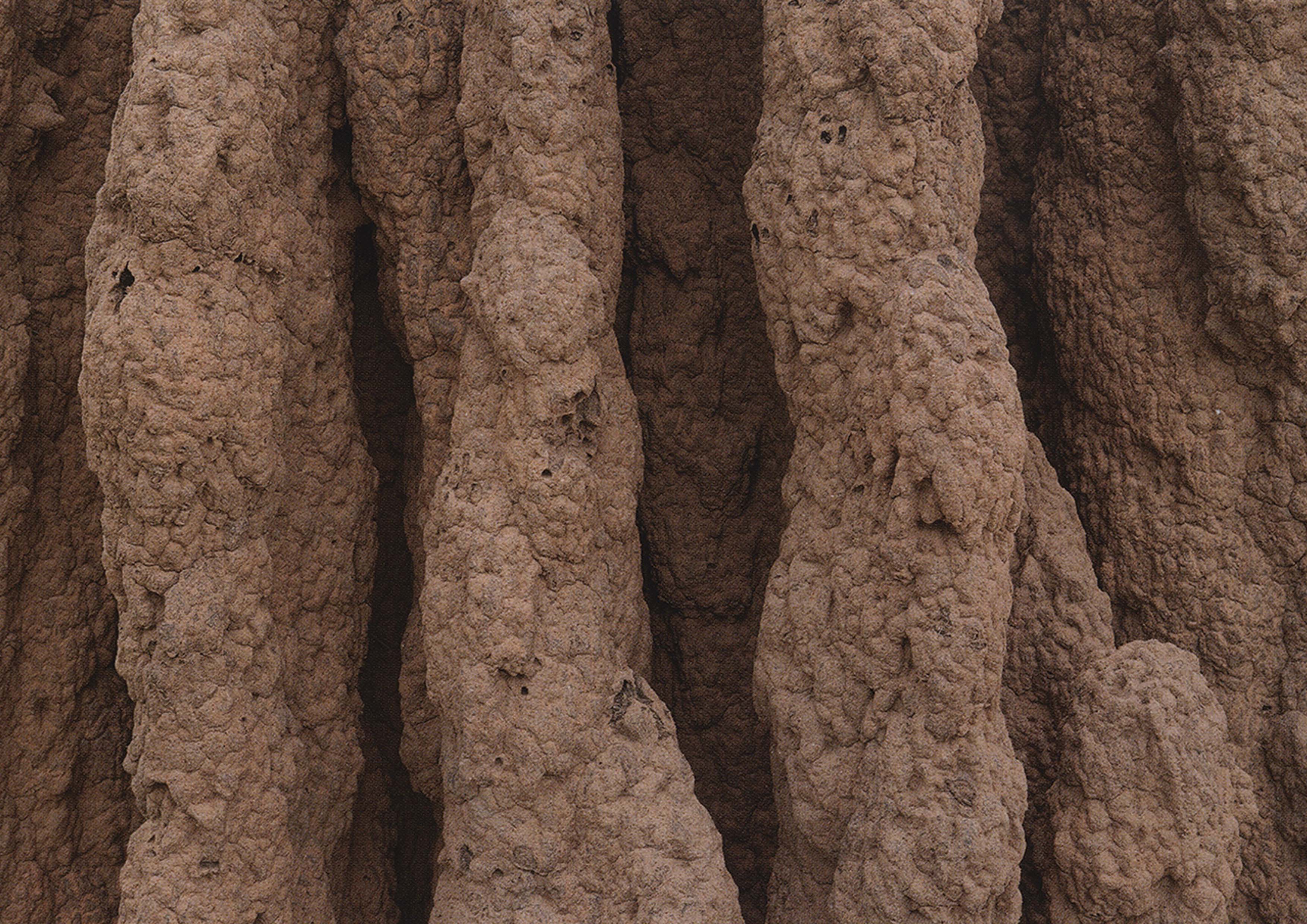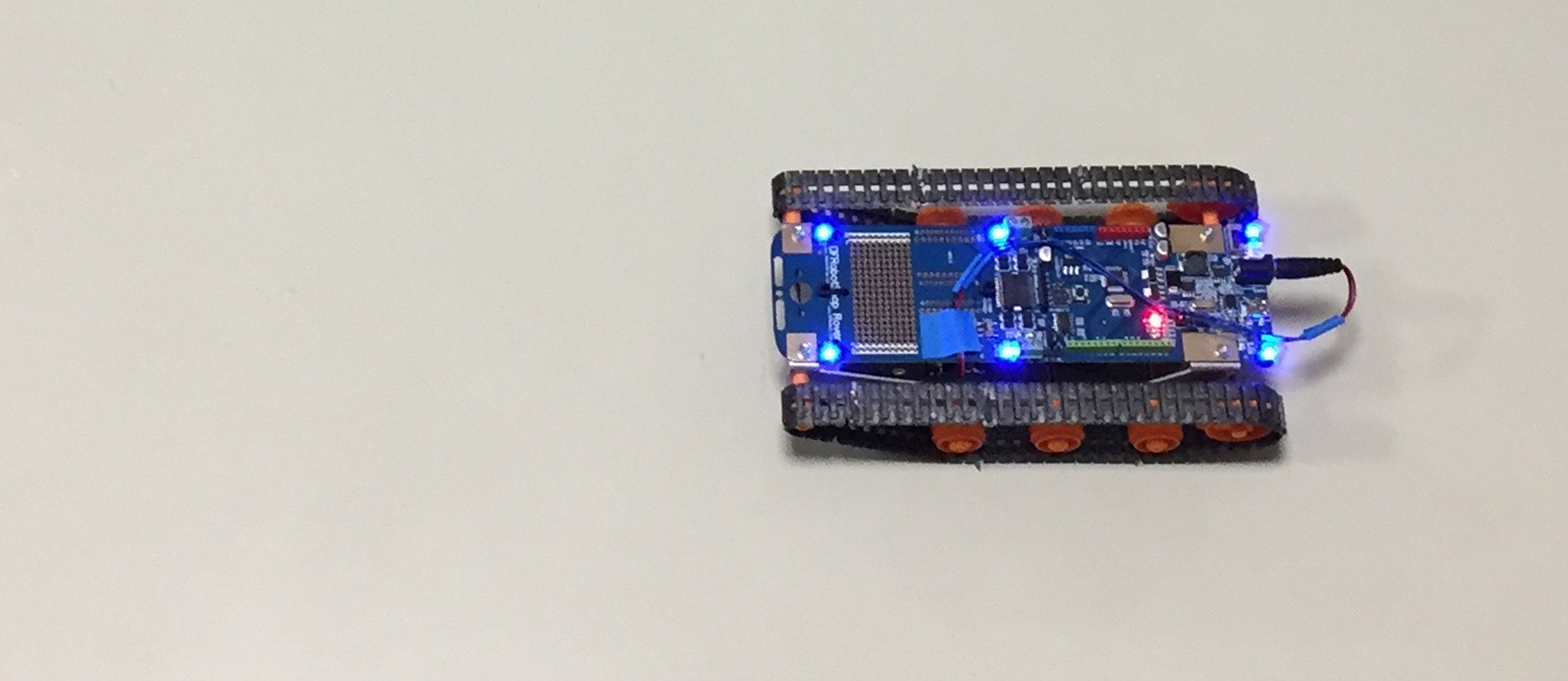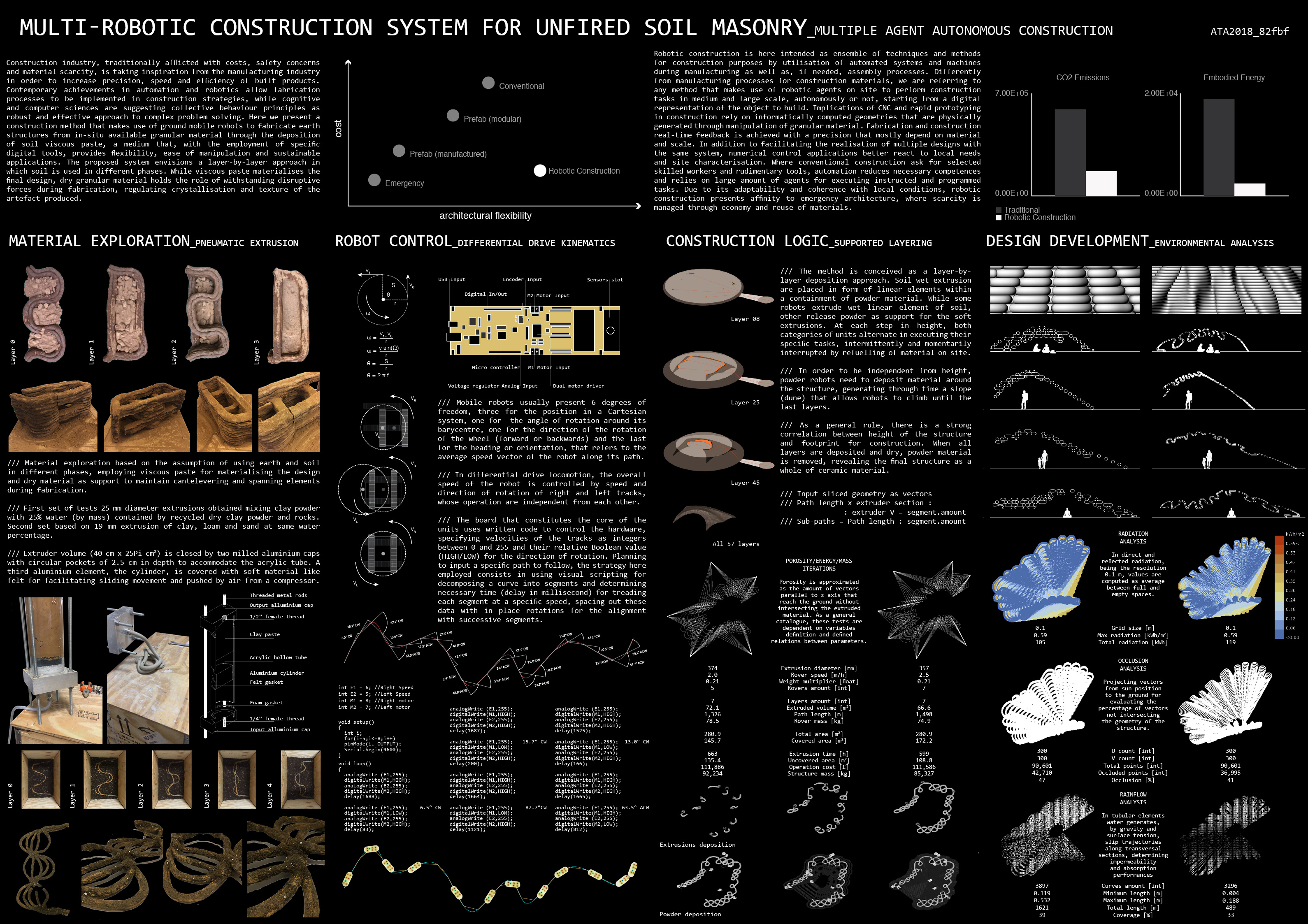Construction industry, traditionally afflicted with costs, safety concerns and material scarcity, is taking inspiration from the manufacturing industry in order to increase precision, speed and efficiency of built products. Contemporary achievements in automation and robotics allow fabrication processes to be implemented in construction strategies, while cognitive and computer sciences are suggesting collective behaviour principles as robust and effective approach to complex problem solving. [Below Australian Spinifex termites mound]

Here we present a construction method that makes use of ground mobile robots to fabricate earth structures from in-situ available granular material through the deposition of soil viscous paste, a medium that, with the employment of specific digital tools, provides flexibility, ease of manipulation and sustainable applications. The proposed system envisions a layer-by-layer approach in which soil is used in different phases. While viscous paste materialises the final design, dry granular material holds the role of withstanding disruptive forces during fabrication, regulating crystallisation and texture of the artefact produced. [Below Arduino Compatible Tracked Robot]

Throughout this work, machines and robots are considered as tools forged by humans for the execution of tasks, while the debate about their contributes in the development of technology will try to ‘abandon the apparently natural assumption that the technosphere is primarily a human-created and controlled system and instead develop the idea that workings of modern humanity are a product of a system that operates beyond our control and that imposes its own requirements on human behaviour. The technosphere is a system for which humans are essential but, nonetheless, subordinate parts.’ [Haff. P. (2014). Humans and technology in the Anthropocene: Six rules. The Anthropocene Review, 1(2), p. 127.] [Below Computed texture iteration]

The Board:






